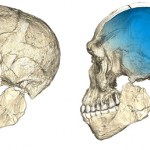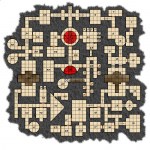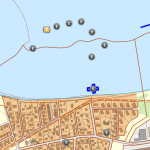archaeology
Habilitation, docentur, is a symbolic upgrade to your PhD found in Scandinavia and other countries with a strong element of German academic traditions. You can think of it as a boy-scout badge. It confers no salary, but it opens certain doors including that of supervising doctoral candidates. Though formally handed out by the faculty, it's impossible to get without support from your department, as I learned from my abortive attempt at the University of Stockholm in 2010. If on the other hand you do have the support of your department, it's impossible to avoid getting your habilitation – a…
Oslo colleagues have asked me to give a fuller account of the spring 2017 hiring that I called the most egregious case I’ve seen. This is not because they're trying to make the University of Oslo's Museum of Cultural History look good, but because they feel that I unfairly singled out a single hire, when in fact there were three. I'm happy to oblige. For one thing, I hadn't even noticed that one of the three has no PhD.
Some background. Norway has a strong tradition of research performed at museums. Bergen's museum, for instance, was doing major science long before there was a university in…
I recently received a long-awaited verdict on an official complaint I had filed: there was in fact nothing formally wrong with the decision by the Dept of Historical Studies in Gothenburg to hire Zeppo Begonia. Since the verdict didn't go my way, as planned I am now turning my back on academic archaeology. The reason is that qualifications don't count in Scandyland.
Being friends with people inside, and preferably being a local product, is what gets you academic jobs here. I need to cut my losses and move on. I would call this post a burning of bridges if there were any to burn, but there are…
In archaeology, we distinguish osteological sex from artefact gender. Osteo-sex is with very few exceptions (odd chromosomal setups) the same thing as what your genitals are like. Artefact gender is the material correlate of a role you play according to the conventions of your time: e.g. whether you keep your genitals in Y-fronts or lacy knickers. We judge these two parameters from separate source materials. Your skeleton can't tell us anything about your gender, and your grave goods can't tell us anything about your osteo-sex. They are in principle able to vary independently.
Nevertheless,…
It seems that my comments yesterday on the small issue of signage at Ales stenar touched a nerve regarding something bigger, having to do with the National Heritage Board's overall societal role in relationship to archaeology and public outreach. Lars Amréus is the Board's Director General, an archaeologist and Qaisar Mahmood's boss. He has kindly written a guest entry in response to mine. My comments will follow in a later entry.
-----
I’m a regular follower of Dr. Rundkvist's blog. I often find it both interesting and engaging. Above all, I appreciate that Dr. Rundkvist is an ardent…
Bob Lind has yet again managed to get the National Heritage Board to abdicate its responsibility at Ales Stenar, a beautiful 7th century AD burial monument near Ystad in southern Sweden. Bob has self-published odd interpretations of the site that have found no traction among professional archaeologists. He has kept vigil at Ales stenar for decades, lecturing to visitors, ranting at the municipal guides and occasionally attacking them. He has a very large sign on site, next to the National Heritage Board's, with permission from the County Archaeologist. My colleague Björn…
Poppies along our fence
My wife receives her second university degree today. In addition to her 15 years in journalism, she is now also a trained psychologist. Go YuSie!!!
I assume 45's lawyers cleared the covfefe tweet?
Small but very satisfying discovery. In 1902 a Medieval coin is found at Skällvik Castle. The finder makes a detailed drawing of the coin and sends coin & drawing to the authorities, who promptly lose track of the coin. Gone. In 1954 a list is drawn up of twelve Medieval coins found at nearby Stegeborg Castle. In 1983 the list is published -- and suddenly there are…
You've heard to story. I'm here to give you a little context.
A pretty typical early handaxe, made by a Homo erectus. This was a big flake made from a bigger rock. The big flake was subsequently flaked to make this handaxe. The word "handaxe" can be spelled about nine different ways.
But in case you haven't heard the story, this is from the press release which is, so far, the only information generally available:
New finds of fossils and stone tools from the archaeological site of Jebel Irhoud, Morocco, push back the origins of our species by one hundred thousand years and show that by…
Palaeobotanist Jennie Andersson has analysed four soil samples for me, all from floor layers inside buildings at Medieval strongholds that me and my team have excavated in recent years. There's one each from Stensö, Landsjö, Skällvik and Birgittas udde. Results were sadly not very informative.
Comments Jennie:
"Overall the fossil and carbonised botanical material in the samples, as well as the recent unburnt material, is meagre … No carbonised cereals were found. Three of the four samples did however contain rather large amounts of unburnt bones and scales from fish plus jurpa, a blanket term…
After almost 14 mostly dismal years on the academic job market, I find it a consolation to read an opinion piece in Times Higher Education under the headline "Swedish Academia Is No Meritocracy". In my experience this is also true for Denmark, Norway and Finland. In Norway, for instance, the referee board that evaluates job applications isn't external to the department: it is headed by a senior employee of the department itself. With predictable results.
At Scandinavian universities, people who didn't get their jobs in fair competition are often handing out jobs to their buddies without any…
Dungeon map by Tim Hartin (paratime.ca)
The original roleplaying game, 1974's Dungeons & Dragons, set the template for a hugely popular genre that persists to this day as RPGs, boardgames (such as Descent) and video games (such as World of Warcraft). The core activity in these games is to enter underground complexes of rooms and tunnels (dungeons), defeat their various inhabitants (dragons, if you're out of luck) and steal their treasure. The player characters who do this are termed adventurers – or, by some these days, murder hobos.
As you may have noticed, there are very few dungeon-…
I'm writing an interdisciplinary book about lifestyles at Medieval strongholds in Östergötland province, Sweden. The central chapter "Activities and roles" is currently 8,900 words. Here are the section headers.
Agriculture at arm's length
Baking bread
Brewing
Animal husbandry and the eating of meat
Hunting and the eating of game and wildfowl
Fishing and the eating of fish
Cooking
Dining and drinking
Waste disposal
Relieving oneself
Lighting
Keeping warm
Healthcare and personal grooming
Fashion and jewellery
Ladyship
Chivalry and horsemanship
Love affairs
Weddings
Growing up
Religion
Music…
Supported by a grant from the King Gustavus Adolphus VI Foundation For Swedish Culture, osteologist Lena Nilsson has analysed the bones we collected during excavations last year at two Medieval strongholds. Two weeks with 19 fieldworkers at Birgittas udde produced only 0.4 kg of bones, because the site has no culture layers to speak of and the sandy ground has been unkind. But from the following two weeks at Skällvik Castle we brought home 32.7 kg of bones! And now Lena has looked at them all. Here are her reports:
Birgittas udde 2016
Skällvik Castle 2016
The reports are…
Archaeological sites in Lake Vättern off Huskvarna
The latest inland ice was 3 km thick and its weight left a big dent in Scandinavia. Since deglaciation (which is, on the geological time scale, a current event) the dent has been straightening out. This causes land uplift. But just outside the edge of the dent, it causes the land to sink. Southernmost Scandinavia is losing land to the sea, not gaining it.
The fulcrum of this see-saw crosses Lake Vättern right at its southernmost point. The lake is receding at one end and encroaching at the other. This is why there is an Early Bronze…
A claim is being made, in a recent issue of Nature Magazine, that humans were active in the vicinity of San Diego well over 100,000 years before archaeologists think humans were even in the New World. Most commentary on this claim dismisses it out of hand, but out of hand rejections are no better than foundationless assertions. Let's take a closer look at the Cerutti Mastodon Site. But first, some important context.
The Near Consensus on North American Prehistory
The Clovis Culture is a Native American phenomenon that occurred between about 12 and 10 thousand years ago (most likely between…
Book note:
There are two books you may want to check out because, for the moment (Tuesday, March 7th is the moment), they are deeply discounted at Amazon:
Kindle version for two bucks: The End of Nature
Kindle version for three bucks: The First Americans
I also want to note that Shawn Otto's book, "The War on Science," is now available as an audio book: The War on Science: Who's Waging It, Why It Matters, What We Can Do About It.
A buddy & colleague of mine took this picture in an Eslöv pizza place, commenting drily that it's a fine example of how the cultural heritage can be used. We've got Thor's hammer, we've got two cartoon Vikings, we've got Swedish flags, and note the three yellow crowns on a blue background: the arms of the Kingdom of Sweden, a strong nationalist statement.
Rural Eslöv municipality is one of the anti-immigration Swedish Hate Party's strongholds, with 22% of the vote in the last election. Vikings and Scandinavian Paganism are of course much beloved by the extreme Right, and stylewise the…
Fornvännen 2016:2 is now on-line on Open Access.
Ola George reports on a Migration Period chamber grave excavated at Björkå in Överlännäs parish, Ångermanland.
Peter Persson surveys chamber graves in all of Västernorrland county.
Ny Björn Gustafsson on radiocarbon-dated beeswax and metalworking on Viking Period Gotland.
Gunnar Andersson et al. on a recent addition to the collection of runestone fragments from the modern village next to Birka, which allowed them to stick all the fragments together into one monument.
Magnus Lindberg & Maria Lingström on metal detecting in contract…
Professors tend to have a few pet issues that they emphasise time and again over their careers as researchers and supervisors. This is quite clear with two 1960s-70s professors in my field. In Bertil Almgren's case, one such pet issue was the source-critical quality of archaeological information. In Mats Malmer's case, one was clear and exact verbal definitions of terms.
I agree with both of these imperatives. But there's one case where an adherence to Almgren's priorities over Malmer's was clearly not the right way to go.
Birger Nerman's monumental folio-format work Die Vendelzeit…
Fornvännen 2016:1 is now on-line on Open Access.
Anton Seiler on a weapon grave with fragments of a Vendel helmet found at Inhåleskullen near Uppsala. Some of the metalwork is interestingly decorated in Salin's Style III/E and must be late additions to the assemblage.
Rune Edberg and Johnny Karlsson on the bone skates of Birka and Sigtuna. Almost none are long enough for grownups!
Anders Nord and colleagues on the pigments used on Medieval stonework in churches on Gotland.
Sabine Sten and colleagues on a wide range of studies done on the bones in Holy King Erik's reliquary in…









